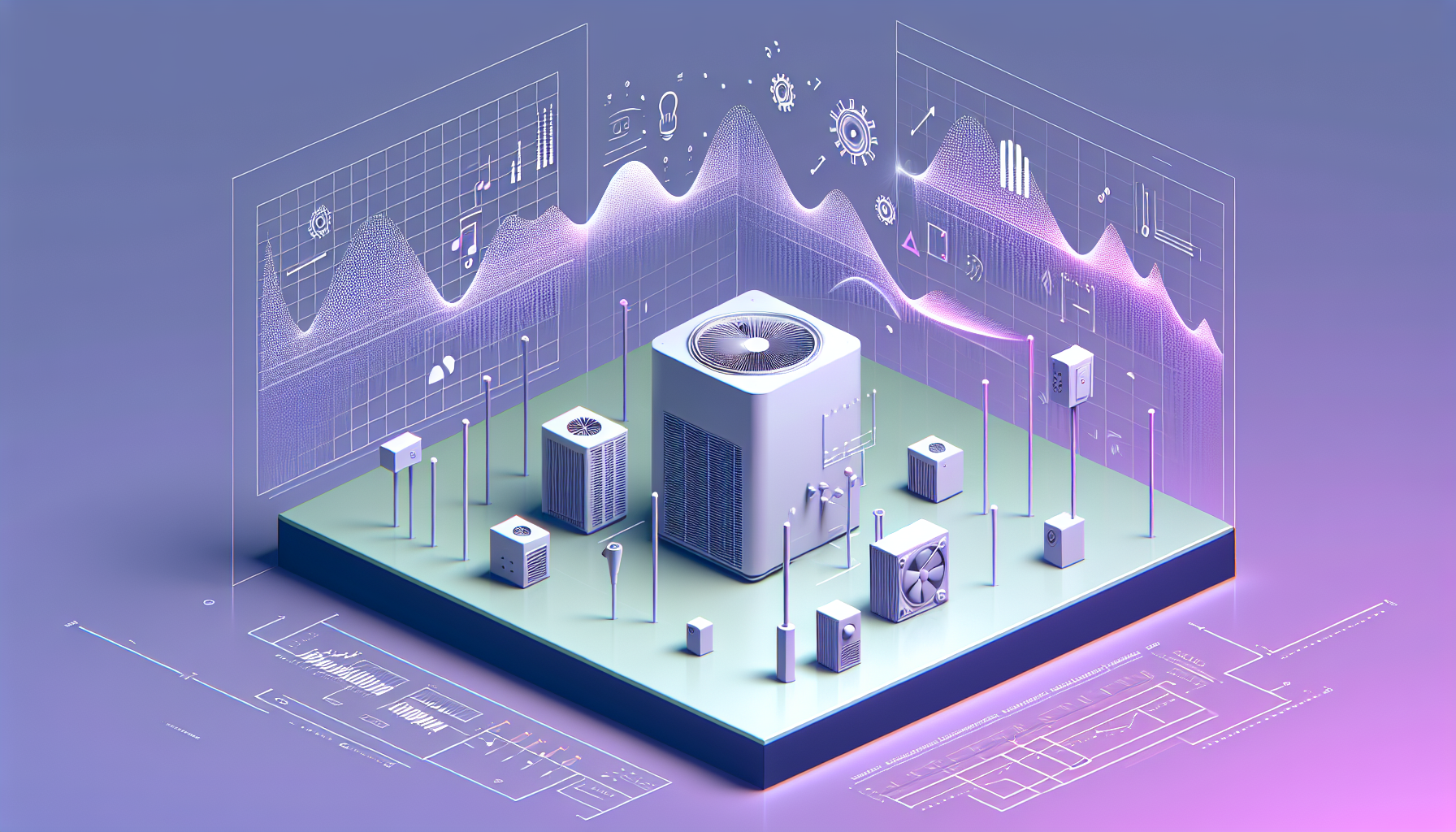Improving HVAC customer satisfaction is easy with multi-channel communication strategies. These methods help you meet customer needs and boost service quality.
In today’s HVAC market, making customers happy is crucial. Using technology and efficient communication can make your business stand out. Remember, 75% of customers want quick service, and 65% like clear updates.
To make your HVAC services better, focus on making things easier and offering many ways to communicate. This way, you can meet different customer needs and support them well from start to finish.
Using these strategies will not only make customers happier but also help your business grow. Keep reading to learn more about why customer satisfaction matters in HVAC and how to use different communication channels effectively.
Understanding the Importance of Customer Satisfaction in HVAC
Customer satisfaction is key in the HVAC industry. It helps your business grow and succeed over time. When you focus on making customers happy, they become loyal. They come back for more services and tell others about you.
Impact on Business Growth
Satisfied customers help your HVAC business grow. They keep coming back, which means more money for you. Happy customers also tell their friends about you, bringing in new customers without spending a lot on ads.
Key Customer Experience Factors
Several things make customers happy with HVAC services:
- Service quality
- Timeliness
- Transparency in pricing
- Technical expertise
- Professionalism of technicians
By focusing on these, you can make customers happier and build a good name in the HVAC industry.
Communication’s Role in Satisfaction
Good communication is key for happy customers in HVAC. Talking clearly and on time helps build trust. Things like maintenance reminders and tips on saving energy make your service more valuable and strengthen your relationship with customers.
| Communication Method | Benefits |
|---|---|
| Phone calls | Personal touch, immediate response |
| Emails | Detailed information, documentation |
| SMS | Quick updates, appointment reminders |
| Social media | Engagement, brand awareness |
Using these strategies can make customers happier, help your business grow, and build a loyal customer base in the competitive HVAC industry.
Leveraging Technology to Streamline HVAC Operations
HVAC software solutions have changed the game, bringing powerful digital tools to the table. These tools help make your HVAC business run smoother and improve customer experiences. By using these advanced systems, you can change how your business works and give customers better service.
Customer relationship management (CRM) platforms are key in today’s HVAC world. They put all customer info in one place. This lets you tailor services and keep track of how you interact with customers. With a CRM, you can:
- Store detailed customer histories
- Schedule appointments seamlessly
- Track service requests and follow-ups
- Analyze customer preferences and behavior
Mobile apps and online portals are now must-haves for HVAC companies. They make it easy for customers to book services, get quotes, and talk to your team. These platforms can:
- Enable real-time appointment scheduling
- Facilitate easy service request submissions
- Offer instant access to service history and invoices
- Provide push notifications for upcoming maintenance
Using digital tools like electronic invoicing can make things run smoother. These solutions offer:
- Real-time updates on job status
- Paperless documentation for reduced errors
- Faster payment processing
- Improved cash flow management
By using these HVAC software solutions, you can make your operations more efficient, boost customer happiness, and grow your business. The secret is to pick systems that work well together. This creates a smooth and efficient workflow for your team and customers.
Implementing Omnichannel Communication Strategies
Omnichannel communication is vital for better customer engagement in the HVAC industry. It means using different platforms together for a smooth experience for your clients. Let’s see how to make this work well.
Integrating Phone, Email, and SMS Communication
Use phone, email, and SMS together for a single communication system. This lets customers pick how they want to contact you. For instance, send reminders via SMS, more details by email, and personal help by phone.
Utilizing Social Media Platforms for Customer Engagement
Social media is key for reaching more people. Share HVAC tips, answer questions, and show off your services on Facebook and Twitter. This helps engage customers and makes your brand more trusted.
| Platform | Content Type | Engagement Strategy |
|---|---|---|
| HVAC tips, service promotions | Respond to comments, run contests | |
| Quick updates, industry news | Use hashtags, retweet customer feedback | |
| Before/after photos, team spotlights | Stories, IGTV for tutorials |
Developing a User-Friendly Mobile App and Website
Creating a mobile app is crucial today. Make an app for customers to book appointments, see when technicians will arrive, and view their service history. Make sure your website works well on all devices.
By using these omnichannel strategies, you’ll make customers happier and streamline your HVAC work. Keep everything consistent across all platforms for a unified brand experience.
Enhance Customer Satisfaction with Multi-Channel Communication
Using many ways to talk to customers is key to making them happier in the HVAC industry. By offering different options, you make sure everyone gets the service they like best.

First, figure out how your customers like to get in touch. This could be by phone, email, text, or social media. Then, make sure your team can answer questions on all these platforms well.
Unified communications systems make managing many channels easier. They put all your ways of talking into one place. This lets your team handle customer needs better. It also keeps the quality of service the same on all channels.
It’s important to talk to customers in a way that feels personal. Use what you know about them to shape how you communicate. For instance, if they like emails, don’t bother them with calls. This shows you care about their time and what they prefer.
- Implement automated appointment reminders
- Offer real-time service updates
- Provide energy-saving tips through preferred channels
- Use chatbots for 24/7 customer support
Using many ways to communicate well can make customers happier. This not only keeps them coming back but also brings in new customers by word of mouth.
Fostering a Customer-Centric Culture in Your HVAC Business
Creating a customer-centric culture is vital for HVAC success. It means focusing on what customers need and want. This approach helps build strong relationships and grows your business.
Training Employees on Effective Communication Skills
Training your team is key to a customer-focused culture. Offer programs that boost communication, empathy, and problem-solving skills. Teach them to listen well, answer professionally, and adjust their style for each customer.
Empowering Staff to Resolve Customer Issues Promptly
Fixing customer problems quickly is important for satisfaction. Let your team make choices that improve the customer’s day. Give them the power to solve problems, offer solutions, and make customers happy.
Implementing Customer Feedback Loops for Continuous Improvement
Improvement comes from knowing what customers need and feel. Use surveys, reviews, and direct talks to get feedback. Then, use this info to make your services better, fix problems, and meet new customer needs.
- Regularly review customer feedback with your team
- Identify patterns and trends in customer comments
- Develop action plans to address recurring issues
- Recognize and reward employees who excel in customer service
By focusing on these areas, you can create a customer-centric culture. This makes your HVAC business stand out. Happy customers become loyal fans, helping your business grow over time.
Personalizing Customer Interactions in HVAC Services
HVAC companies are now focusing on personalized service to make customers happier. They use customer data to give recommendations that fit each person’s needs. This makes the service more engaging and satisfying for clients.
Using customer preferences helps tailor services. For instance, HVAC technicians can look at past service records to predict future problems. They can then suggest maintenance to prevent these issues. This shows they really understand what each customer needs.
Using a customer relationship management (CRM) system also boosts personalization. These tools help HVAC businesses keep track of customer interactions and preferences. With this info, technicians can offer solutions that are more informed and suited to each customer.
| Personalization Strategy | Benefits |
|---|---|
| Customized maintenance schedules | Improved system efficiency, reduced breakdowns |
| Personalized energy-saving tips | Lower utility bills, increased customer satisfaction |
| Tailored product recommendations | Better match to customer needs, increased sales |
By focusing on personalized interactions, HVAC companies can strengthen their bonds with customers. This leads to more loyalty, positive word-of-mouth, and growth for the business.
Leveraging Data Analytics for Improved Customer Experience
Data analytics is changing the HVAC game. It lets businesses use customer data to improve services and make customers happier. Let’s see how you can use data analytics to change your HVAC business.
Collecting and Analyzing Customer Data
First, collect customer data like service history, preferences, and feedback. Then, analyze this info to get insights. These insights help make better decisions and improve services.
| Data Source | Type of Insights | Potential Benefits |
|---|---|---|
| Service History | Maintenance Patterns | Optimize Service Schedules |
| Customer Feedback | Satisfaction Levels | Identify Areas for Improvement |
| Energy Usage Data | Consumption Trends | Offer Energy-Saving Solutions |
Using Insights to Tailor Communication Strategies
After analyzing data, use it to make communication strategies that fit each customer. Personalized messages can make customers more engaged and happy.
Implementing Predictive Maintenance Based on Data Analysis
Predictive maintenance uses data analytics well in HVAC. By looking at equipment performance, you can spot issues before they happen. This way, you can fix problems early, make equipment last longer, and keep customers happy.
- Monitor system performance in real-time
- Identify patterns that indicate potential failures
- Schedule maintenance before breakdowns occur
- Reduce emergency repairs and customer inconvenience
By using data analytics, you can change your HVAC business for the better. You’ll make customers happier with smart decisions and quick service.
Integrating Chatbots and AI for 24/7 Customer Support

HVAC businesses are now using AI to change how they help customers. By adding chatbots and artificial intelligence, you can offer help any time of the day. This tech lets you manage simple questions, set up meetings, and give help right away without needing a person.
Chatbots with natural language processing can understand what customers are asking and give the right answers. They can look up information in your company’s database to answer questions about HVAC systems, upkeep tips, and how to fix problems. This means your human staff can focus on the harder issues that need a personal touch.
To get the most out of AI support, think about these ideas:
- Link chatbots with your CRM system for more personal chats
- Make sure chatbots smoothly pass on complex issues to human agents
- Keep improving AI based on what customers say and do
- Use chatbots to gather important info on what customers like and what they’re worried about
Using chatbots and AI means you can help customers all day, every day. You’ll get faster answers and happier customers. This tech makes your business run smoother and shows you’re always looking for new ways to help in the HVAC field.
Implementing Proactive Communication Strategies
Proactive communication is crucial for making customers happy in the HVAC industry. By guessing what your clients need and sharing information on time, you can gain their trust and loyalty.
Sending Maintenance Reminders and Tips
Regular maintenance reminders keep HVAC systems running well. Send emails or texts with tips for each season to avoid breakdowns. This shows you care about their comfort and the life of their system.
Providing Real-Time Updates on Service Appointments
Let customers know when your technicians will arrive with updates. Use SMS or apps to tell them about the time and progress of their service. This keeps them informed and makes the service better.
Offering Energy-Saving Recommendations
Give your customers energy-saving tips to add value. Look at how they use their system and send them advice to cut down on energy use. This helps them save money and sees your company as a trusted advisor.
| Communication Strategy | Benefits | Implementation Method |
|---|---|---|
| Maintenance Reminders | Prevents system breakdowns, extends equipment life | Automated emails, SMS |
| Real-Time Updates | Reduces wait times, improves customer experience | SMS notifications, mobile app alerts |
| Energy-Saving Tips | Lowers energy bills, builds trust | Personalized emails, in-app recommendations |
Using these proactive communication strategies can greatly boost customer satisfaction and create strong relationships with your HVAC clients. Clear and timely communication is key to solving problems and making systems more efficient.
Measuring and Tracking Customer Satisfaction Metrics
Tracking customer satisfaction is key for HVAC businesses to get better and grow. By using key performance indicators (KPIs), you can see how well you meet customer needs.
Start by doing regular customer satisfaction surveys. These surveys get you valuable feedback and insights on your service quality. Look at the results to spot trends and areas to improve in your HVAC work.
Two important KPIs for tracking performance are the Net Promoter Score (NPS) and Customer Effort Score (CES). NPS shows how likely customers are to suggest your HVAC services. CES looks at how easy it is for customers to work with your company.
| Metric | Purpose | Measurement Scale |
|---|---|---|
| Net Promoter Score (NPS) | Customer loyalty and satisfaction | 0-10 |
| Customer Effort Score (CES) | Ease of customer experience | 1-7 |
| Customer Satisfaction Score (CSAT) | Overall satisfaction with service | 1-5 or 1-10 |
Collect immediate feedback after you finish HVAC services. This way, you get feedback quickly and can fix issues fast. Use these metrics to make smart decisions and keep improving your HVAC customer experience.
Addressing Common HVAC Customer Pain Points through Effective Communication
Good communication is key to solving HVAC customer problems. By tackling common issues directly, you can make customers happier and more trusting of your services.
Providing transparent pricing and service explanations
It’s important to have clear pricing for your customers. Give detailed cost breakdowns and explain services in easy-to-understand language. This makes customers see the value they’re getting and avoids unexpected charges.
Offering flexible scheduling options
HVAC problems don’t always wait for regular business hours. Offer flexible times, like evenings and weekends. This shows you respect your customers’ time and care about their comfort.
Ensuring timely follow-ups and issue resolution
Fast responses and solving problems quickly are crucial. Set up a system for quick updates during the service process. Regular updates and quick follow-ups show you care about your customers and aim to fix issues fast.





0 Comments